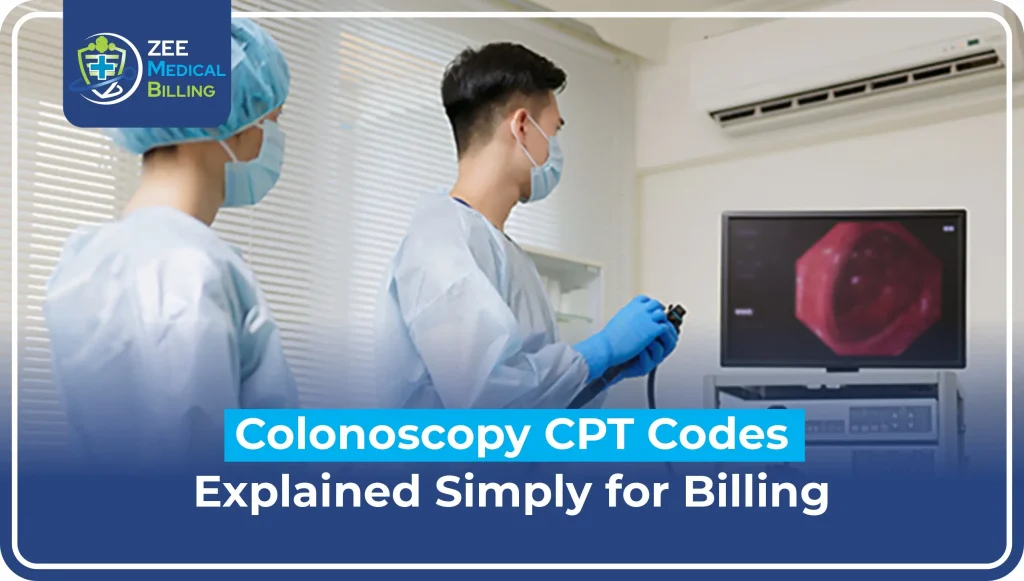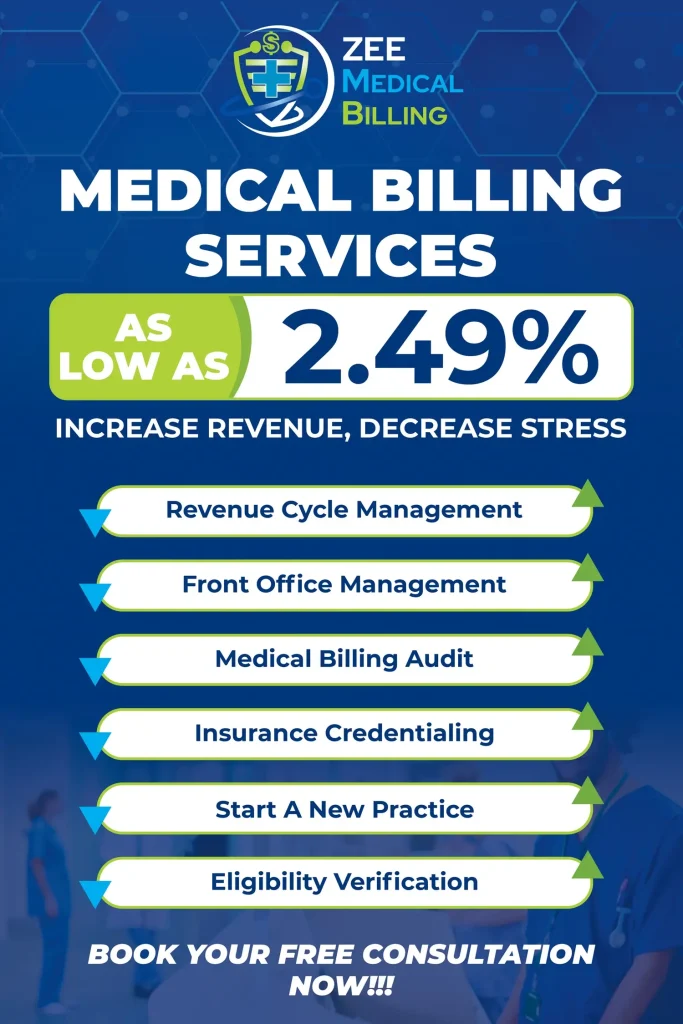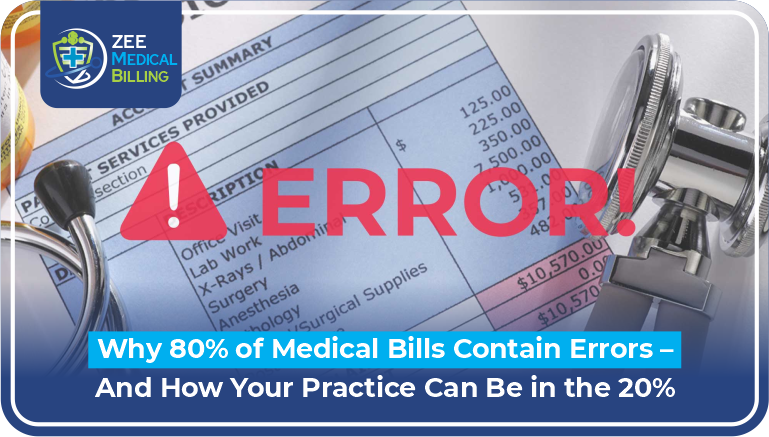Understanding medical billing can be overwhelming, especially regarding procedures like colonoscopies. There are different types of colonoscopies, each with its own code. Knowing what each CPT code means and when to use it is important.
This blog will explain colonoscopy CPT codes in simple terms. It aims to help healthcare professionals, billing staff, and patients understand medical billing better.
What Are CPT Codes?
CPT stands for Current Procedural Terminology, a standardized system for describing medical, surgical, and diagnostic services. These codes help communicate procedures between providers, payers, and institutions for billing and documentation purposes.
Each CPT code is a five-digit number representing a specific medical procedure. The American Medical Association (AMA) oversees the CPT code set and updates it regularly to keep up with changes in medical practices and technology.
Read More: Skin Tag ICD-10 Codes and CPT Guide for Easy Billing
There are different CPT codes for colonoscopy procedures, depending on the type of procedure. This includes preventive, diagnostic, or procedures with extra steps like a biopsy or polypectomy. Understanding these differences is essential for billing correctly and avoiding claim denials.
Why Colonoscopy CPT Codes Matter in Billing?
Each colonoscopy procedure is different, and insurance companies rely on CPT codes to determine coverage. Submitting the wrong code can result in claim denials, delayed payments, or even non-reimbursement. That’s why understanding the CPT codes for colonoscopy is essential for accurate billing.
Colonoscopy procedures often begin as routine screenings. However, if a doctor finds a polyp or abnormal tissue, the procedure may change. It can go from being preventive to diagnostic or therapeutic. This distinction plays a vital role in whether or not the patient is responsible for a copay or deductible.
Additionally, coding impacts how Medicare, Medicaid, or private insurance companies reimburse facilities and providers. Mistakes in coding can also trigger audits or compliance issues, which can be costly for healthcare organizations.
Categories of Colonoscopy Procedures
1. Screening Colonoscopy
A doctor performs a screening colonoscopy on a healthy person. It checks for signs of colorectal cancer or polyps before symptoms show up. Healthcare professionals often recommend it for adults aged 45 and older as part of preventive care.
- CPT Code for Screening Colonoscopy: 45378 This is the base code for a routine colonoscopy screening without any additional procedures.
Other relevant codes based on findings during the screening include:
- CPT Code for Colonoscopy with Biopsy: 45380
- CPT Code for Colonoscopy with Polypectomy: 45385
These codes apply if a doctor performs a biopsy or removes a polyp during what begins as a preventive screening. If the procedure changes in nature, billing must reflect that change, often requiring a modifier.
2. Diagnostic Colonoscopy
Doctors perform a diagnostic colonoscopy for certain symptoms. These symptoms include rectal bleeding, chronic diarrhea, constipation, weight loss, and abdominal pain.
- CPT Code for Diagnostic Colonoscopy: 45378. This is the same code as routine screening but is categorized differently based on medical necessity and documentation.
If other procedures are performed during the diagnostic colonoscopy, different codes apply:
- Colonoscopy with Biopsy: 45380
- Colonoscopy with Polypectomy: 45385
Different insurance rules often apply to diagnostic colonoscopies, and they may not fully cover them like preventive screenings. Documenting symptoms is essential to justify the diagnostic nature.
3. Therapeutic Colonoscopy
These involve treatment during the procedure. This includes removing tumors, stopping bleeding, or putting in stents to open narrow areas.
Examples include:
- CPT Code for Colonoscopy with Biopsy: 45380
- CPT Code for Colonoscopy with Polypectomy: 45385
Therapeutic colonoscopies often involve more complex procedures and require more time and skill. The CPT codes used should reflect the specific interventions carried out.
4. CT Virtual Colonoscopy
This is a noninvasive imaging procedure that uses CT scans to examine the colon. It is recommended for individuals who cannot undergo a traditional colonoscopy.
- CPT Code for CT Virtual Colonoscopy (Screening): 74263
- CPT Code for CT Virtual Colonoscopy (Diagnostic): 74261
These procedures use advanced imaging to detect polyps and cancerous growths. While not as widely used as traditional colonoscopies, they are gaining popularity for specific cases.
Common CPT Codes for Colonoscopy Procedures
Here is a summary table for frequently used CPT codes:
| Procedure | CPT Code |
| Routine Screening Colonoscopy | 45378 |
| Colonoscopy with Biopsy | 45380 |
| Colonoscopy with Polypectomy | 45385 |
| Diagnostic Colonoscopy | 45378 |
| CT Virtual Colonoscopy (Diagnostic) | 74261 |
| CT Virtual Colonoscopy (Screening) | 74263 |
Note: The final code used must reflect what was done during the procedure. A screening may turn into a diagnostic or therapeutic colonoscopy if something is found and treated.
Key Considerations for Colonoscopy CPT Coding
1. Intent of the Procedure
Understanding whether the colonoscopy is preventive or diagnostic is critical. You can use the same code (e.g., 45378), but the billing context changes entirely. Preventive procedures often carry no cost-sharing under insurance, while diagnostic ones may not.
2. Findings During the Procedure
If someone finds and removes a polyp or if a doctor performs a biopsy, the CPT code will change. This happens even if the doctor planned the colonoscopy as preventive. Proper documentation is essential to justify the change.
Read More: Everything To Know About Hospice Modifier GV And GW
3. Modifiers and Diagnosis Codes
Sometimes, billers use modifiers like 33 (preventive service) or PT (colonoscopy changed to diagnostic) for correct billing and coverage.
- Modifier 33: Used to indicate preventive services that may include therapeutic components.
- Modifier PT: Used when a screening colonoscopy becomes diagnostic.
Using modifiers appropriately helps ensure the correct processing of claims.
4. ICD-10 Codes Matter Too
CPT codes go hand-in-hand with diagnosis codes (ICD-10). If the procedure is preventive, the diagnosis code may be Z12.11 (encounter for screening for malignant neoplasm of the colon). For diagnostic procedures, the ICD-10 code should match the patient’s symptoms.
5. Insurance Guidelines Differ
Not all insurance companies follow the same rules. Medicare, for example, may allow certain screenings every 10 years or sooner if there’s a family history. Private insurance plans may differ, so verifying coverage before the procedure is crucial.
FAQs
1. What is the CPT code for colonoscopy with biopsy?
The doctor uses CPT code 45380 when performing a biopsy during the colonoscopy.
2. What is the CPT code for colonoscopy screening?
The base code is 45378 when a doctor does not perform a biopsy or polyp removal. If someone performs additional procedures, the code changes accordingly.
3. Is there a difference between screening and diagnostic colonoscopy codes?
The base CPT code may be the same, like 45378. However, the purpose and diagnosis decide if the colonoscopy is preventive or diagnostic.
4. What CPT code is used for colonoscopy with polyp removal?
Use 45385 when the procedure involves removing polyps with a snare technique.
5. Can CPT codes change mid-procedure?
Yes. For example, a screening colonoscopy (45378) can change to a biopsy (45380) or polypectomy (45385) if needed. You must update the documentation and coding accordingly.
Conclusion
Understanding CPT codes for colonoscopies can be confusing. However, knowing the procedure’s purpose and actions is key to accurate billing. Each code serves a specific purpose, and using the correct one ensures smooth claim processing.
Colonoscopy CPT codes like 45378, 45380, 45385, and 74263 for CT virtual colonoscopies are important. They help with compliance, reimbursement, and clarity in medical billing.
If you are a provider, billing specialist, or patient, it is important to know about colonoscopy and CPT codes. This knowledge can help you understand a bill better.
Need Expert Medical Billing Services?
Zee Medical Billing provides professional billing solutions tailored to healthcare providers across the United States. In addition to offering top-tier support from our main office, we proudly serve clients in Illinois, Indiana, California, Kentucky, New York, Washington, Georgia, Alabama, South Carolina, Texas, Pennsylvania, Ohio, New Hampshire, Nevada, Massachusetts, Hawaii, Arizona, and Colorado! Whether you’re looking to streamline your revenue cycle or improve claims accuracy, you can reach out to us to learn more about how we can support your practice.









